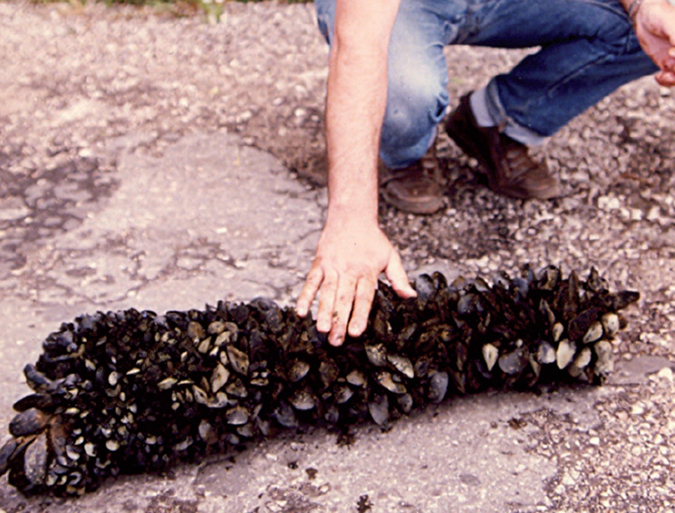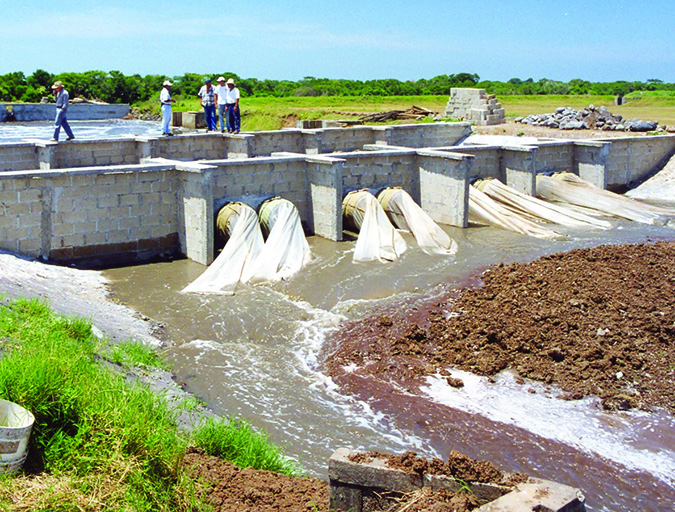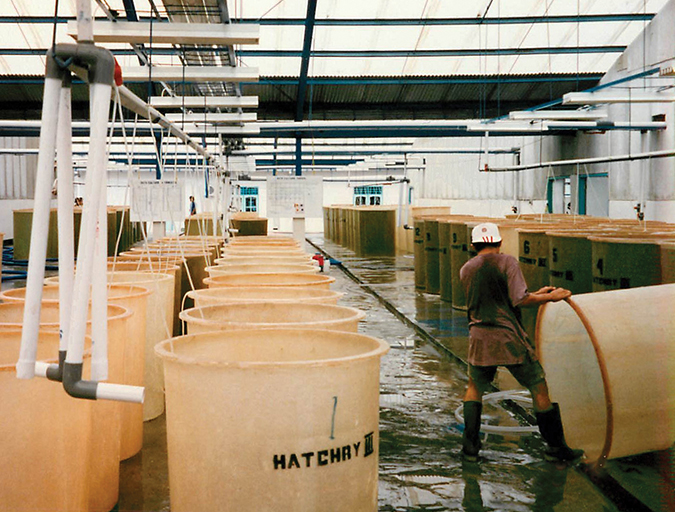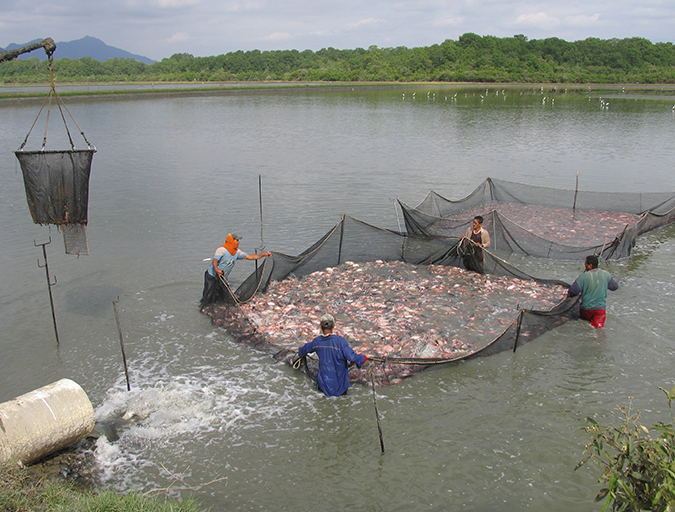As aquaculture intensifies, so will the prevalence and severity of parasite infections

Obligate and opportunistic parasites play a critical role in determining the productivity, sustainability and economic viability of global finfish aquaculture enterprises. Without stringent and appropriate control measures, the impacts of these pathogens can often be significant.
Estimating the true impacts of each parasite event, however, is complicated, as costs can be affected by a diverse assortment of environmental and management factors. The factors can range from direct losses in production to the more indirect costs of longer-term control and management of infections and the wider, downstream socioeconomic impacts on livelihoods and satellite industries associated with the primary producer.
Certain parasite infections may be predictable, as they occur regularly, while others are unpredictable because they arise sporadically. In each case, there can be costs for treating and managing infections once they are established, but for predictable infections, there also are costs associated with prophylactic treatment and management.
Table 1 provides some estimates of economic loss associated with notable protistan and metazoan parasite events in some of the world’s leading finfish production industries. The figures provided in Table 1 were extracted from a larger study by the authors in which the potential economic costs related to 498 specific events attributable to a range of key parasite pathogens were detailed.
Acceptance of losses
A significant proportion of stock losses occur within the hatchery/nursery phases of production. In many industries, these are factored into and accepted as part of normal operational practices.
Such fatalistic acceptance means losses are frequently underreported, hiding the severity and impacts of parasites such as omycete species belonging to the genera Aphanomyces and Saprolegnia; the dinoflagellates Amyloodinium ocellatum and Piscinoodinium pillulare; ciliate protozoans such as Trichodina species, Ichthyophthirius multifiliis and Cryptocaryon irritans; and species belonging to the monogenean genera Gyrodactylus and Dactylogyrus.
Estimating global costs
The authors recently began to estimate the global costs of parasitism by following production at four commercial Nile tilapia, Oreochromis niloticus, farms in Thailand over the course of 12 months to determine average mortality rates in the earlier stages of production. The data are presented in Figure 1. From these values, the following survival rates can be determined: egg production (77.5 percent hatch rate), swim-up fry (77.8 percent survival from hatched eggs, 60.8 percent survival of starting egg number), 21-day post-monosex fry (78.9 percent survival from swim-up fry, 48 percent survival of starting egg number) and in 2.5-cm nursery-size fish (83.3 percent survival from 21-day monosex stage, 40 percent survival of starting egg number).
Hatchery-based losses were then calculated using local production costs — 0.1 Thai baht (U.S. $0.0028) for each egg to swim-up stage, 0.2 baht ($0.0057) for each swim-up to monosex fry and 0.3 baht ($0.0085) for each monosex to nursery-size fish — and by assuming that 20 percent of the mortalities can be directly attributed to parasitic infection.
Given the broad diversity of aquaculture, the 267 food finfish species and categories listed by the Food and Agriculture Organization (FAO) of the United Nations and the vast spectrum of parasites that can impact their production, it is almost impossible to ascribe a single value that captures all the losses induced by parasite activity in each industry. Likewise, despite continuous health monitoring by on-site diagnosticians, it is technically impossible to determine the cause of mortality of every fish on site.
From the figures provided above and in Figure 1, for example, about 1.2 million 21-day post-monosex fry are lost each month (about 40,000/day). From a parallel study conducted by some of the current authors, it would appear that parasites account for an annual loss of $62 million to $175 million, representing 5.8 to 16.5 percent of the value of aquaculture production in the United Kingdom across all species reared in freshwater, brackish and marine systems.
To begin moving toward an estimate of loss attributable to parasitism, the figure of 20 percent is applied here to estimate stage-specific losses due to parasites within the hatchery phase of production. This is based on this latter study on aquaculture activities in the U.K. It is important to stress, however, that this is not 20 percent of global harvest production.
Global numbers
In 2013, the last year for which complete figures are available from FAO, the global production of finfish through aquaculture was 47.07 million metric tons (MT). If we assume an average sale weight of harvest-sized fish of 0.4 to 0.5 kg, the total number of harvest fish sold annually can be estimated at 94.14 billion to 117.68 billion.
If this figure is adjusted by assuming a 10 percent loss of fish between nursery and harvest, the annual number of post-nursery fish can be estimated as 103.55 billion to 129.44 billion. If the same percentages of parasite-induced loss are applied for each stage of finfish hatchery production, and assuming that $1.00 = 32.16 Thai baht, the annual global loss of juvenile fish can be estimated at between $107.31 million and $134.14 million.
Using the annual production of all farmed tilapia species for 2013, for example, which was 4.82 million MT, we can estimate there were 9.7 billion to 13.4 billion post-nursery fish produced and that the economic losses of juvenile tilapia to parasitic infection were $4.84 million to $6.66 million at the nursery stage, $5.84 million to $8.02 million at the monosex stage and $5.13 million to $7.05 million at the swim-up stage.
Secondary losses
However, these estimates are for the direct losses due to parasitic infections and do not account for the role that parasites can play in facilitating secondary infections and the resultant losses.
Considering post-nursery losses, the total production in 2013 was 40.50 million MT of freshwater fish valued at $1,641/MT, and 6.57 million MT of brackish and marine fish valued at $4,203/MT. If we assume parasites are responsible for the loss of 1 to 10 percent of harvest-size fish, then the value of these fish can be estimated at $945.00 million for 1.0 percent loss, $2.36 billion at 2.5 percent loss, $4.72 billion for 5 percent and $9.45 billion at 10 percent loss. If the hatchery and growout figures are combined, the annual global cost of parasites in finfish aquaculture can be very loosely and tentatively estimated at $1.05 billion to $9.58 billion.
Perspectives
Moving toward an accurate estimation of the global cost of parasite-associated impacts is dependent on detailed, high-quality data and the resources necessary to undertake such studies. However, as global aquaculture continues to grow and intensify, the prevalence and severity of parasite infections will similarly rise, as will the attendant economic costs of parasitism.
In addition, the increased trade in finfish and their products may facilitate the spread of parasites into new environments. Changing climatic conditions will also place increased pressure on aquaculture systems, current production practices and the interactions among wild and farmed aquatic stocks, parasite life cycles and transmission pathways.
Now that you've reached the end of the article ...
… please consider supporting GSA’s mission to advance responsible seafood practices through education, advocacy and third-party assurances. The Advocate aims to document the evolution of responsible seafood practices and share the expansive knowledge of our vast network of contributors.
By becoming a Global Seafood Alliance member, you’re ensuring that all of the pre-competitive work we do through member benefits, resources and events can continue. Individual membership costs just $50 a year.
Not a GSA member? Join us.
Authors
-
Andy Shinn, Ph.D.
Fish Vet Group Asia Ltd.
99/386 Chaengwattana Building
Chaengwattana Road
Kwaeng Toongsonghong, Khet Laksi
Bangkok 10210 Thailand -
Jarunan Pratoomyot, Ph.D.
Institute of Marine Science
Burapha University
Chonburi, Thailand
-
James Bron, Ph.D., Giuseppe Paladini, Ph.D., Esther Brooker and Adam Brooker, Ph.D.
Institute of Aquaculture
School of Natural Sciences
University of Stirling
Stirling, United Kingdom
Related Posts

Intelligence
Human enteric viruses in shellfish, part 3
Epidemiological studies have estimated that noroviruses are responsible for 60 percent to 80 percent of all foodborne outbreaks of gastroenteritis worldwide. Consumption of shellfish is one of three main transmission routes of norovirus infection.

Health & Welfare
Vibrio control in shrimp farming: Part 2
Strategies to control Vibrio bacteria at aquaculture farms must revolve around limiting inputs, including those from postlarvae suppliers, those that come in with the water, those that remain in the soil between crops and those in the feed and accumulated organic matter.

Health & Welfare
Vibrio control in shrimp farming: Part 1
Control of Vibrio bacteria should focus on minimizing overall bacterial loads and the potential for horizontal transmission. The challenge for hatchery managers is identifying gaps in biosecurity and plugging them without creating niches for other potential pathogens.

Responsibility
Addressing safety in Latin America’s tilapia supply chain
Over the last decade, the experience gained by many tilapia farmers combined with proficient programs implemented by local governments have significantly improved tilapia production in various Latin American countries like Colombia, Mexico, Ecuador and other important tilapia producers in the region.



